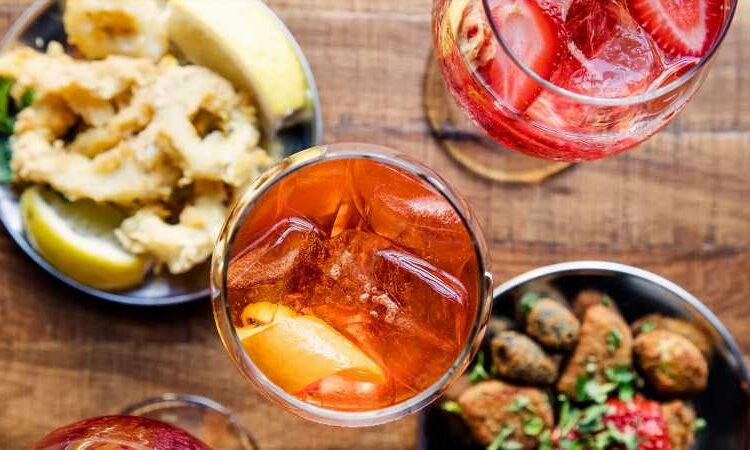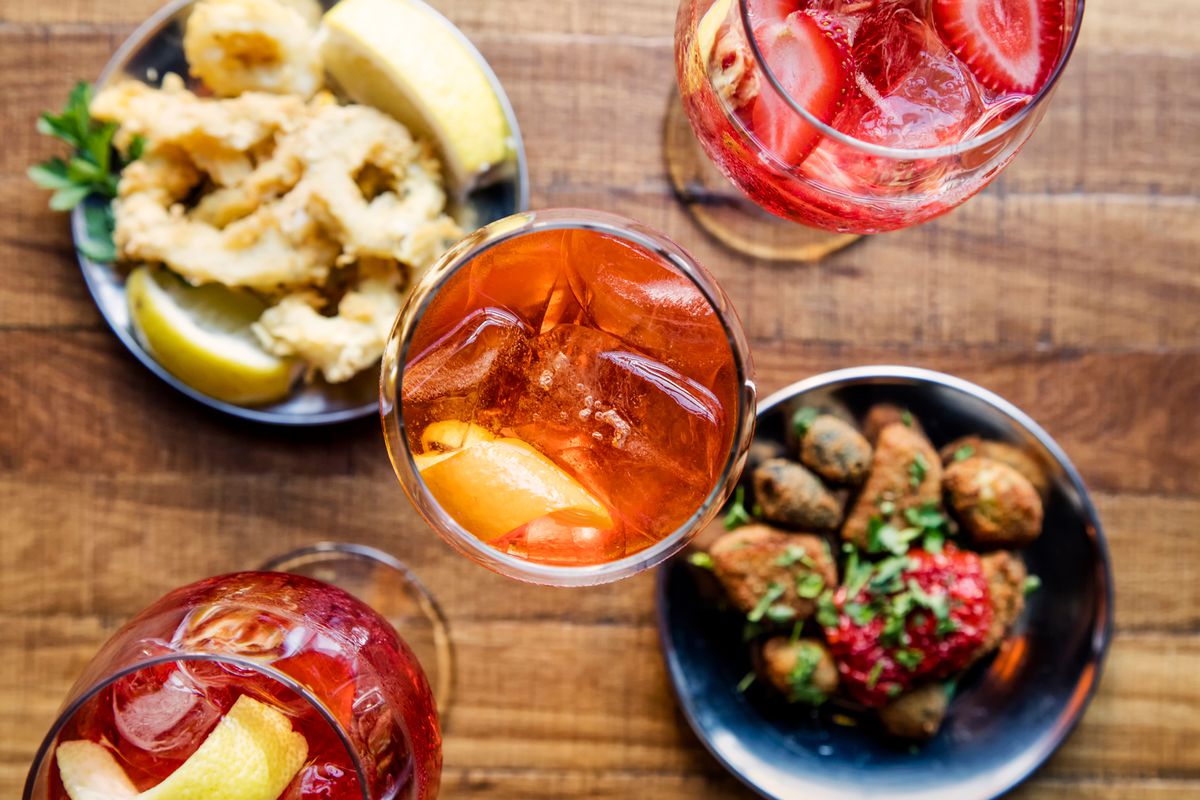Customs and practices associated with dining and drink evolve over time and place. Food delivery and elaborate take-out meals were increasing in popularity even before the pandemic shut down restaurants. Diet styles like vegan, vegetarian, paleo, and zero-carb are becoming mainstream in certain parts of the country. Cocktails have become complex projects with as many as a dozen ingredients — a major change from the simple highball, scotch and soda, and rum and Coke of the past. One widely enjoyed custom associated with dining and drink — aperitivo — originated in Italy several hundred years ago, and continues in various forms around the world today.
Aperitivo is a drink, usually wine or a light mixed cocktail, accompanied by a small meal at the end of the workday, intended to be a prelude to dinner. In Italy, where dinner is usually eaten later than in the U.S., the typical time of day for aperitivo is around 7-9 p.m. The drink and accompanying snack are intended to whet the appetite and set the stage for the meal, so the drinks are often herbal, bitter, or sparkling. Although there might be a distant relationship, the aperitivo is not the same as happy hour, usually from 4-6pm, where drinks are discounted and food is plentiful, frequently taking the place of dinner.
"It's not possible to pick a date for the beginning of aperitivo, but it's a social experience that began around the late 1700s," Los Angeles-based wine and food educator Giammario Villa told Travel + Leisure.
Torino distiller Antonio Benedetto Carpano is credited with creating vermouth, the widely sipped aperitivo drink, in 1786, blending fortified wine with various aromatic herbs and spices. According to Villa, Piedmont's plentiful local herbs, combined with its wine-making tradition, led almost naturally to the alchemy of vermouth's creation.
Take pride in what you serve by choosing a brand known for its 155-year Italian heritage. Make Martini & Rossi Fiero & Tonic your new entertaining tradition.
Next came the cafè for the social environment, where people came together to enjoy local products like cured meats and cheeses along with a glass of vermouth at the end of their workday. In Italy, aperitivo crowds gather in the piazza, osteria, or cafè, and different regions have adopted a variety of beverages as they evolved.
In 1860, Gaspare Campari created his eponymous vibrant red, bitter beverage, widely served as an aperitivo with soda water or in cocktails like the Negroni and Americano. The exact recipe for Campari remains a secret, but the ingredients are bitter herbs, aromatic plants, and fruit in alcohol and water.
Around the same time, Alessandro Martini and Luigi Rossi combined herbs, natural caramel, aromatic botanicals, and herbaceous plants to create their first vermouth, Martini & Rossi Rosso. Their original recipe, unchanged for more than 150 years, is a closely guarded secret. Today Martini & Rossi products include a variety of vermouths as well as several sparkling wines. The most recent addition to their line is Fiero, an aperitivo vermouth with vivid color and notes of citrus.
Generally, aperitivo drinks are bitter, herbal, and low in alcohol. Vermouth and other wines, including sparklers like increasingly popular prosecco, are frequently ordered. Bitter flavors are thought to stimulate the appetite and light foods create interest or openness for dining, hence the word aperitivo from aperire, Latin for "open." Villa pointed out that many of the aperitivo snacks are fried or fatty like cheeses, prosciutto, and mortadella, so sparkling wines are ideal palate cleansers.
Aperol, the bright orange ingredient in the spritz, is also bitter in taste, and combined with prosecco, a splash of soda, and an orange slice, it has become a worldwide favorite after its introduction a few decades back in the Veneto. While Aperol dates to 1919, as stated on its bottle, the original spritz, a mixture of wine with soda water, was favored by Veneto-based Austrian soldiers who found Italian wines too strong.
A relative newcomer to aperitivo is Italicus Rosolio di Bergamotto based on a recipe from the 1800s incorporating Italian bergamot, rose, lavender, and other flavors and presented in a gorgeous aqua bottle. It's bitter, floral, and low in alcohol, best enjoyed mixed with prosecco or tonic and garnished with green olives.
Should you find yourself someday in a Roman piazza or along a Venetian canal around early evening — a lovely thought — you might settle in for aperitivo at a local cafè. Choose a glass of vermouth, prosecco, or a cocktail, and watch as the crowd gathers and voices rise. Aperitivo is meant to be social, so we hope you have someone to chat with as you sip and nibble. You may be given a small serving of something to accompany your beverage, or if there's a buffet-type arrangement, help yourself to a plate of cheese, meat, bread, or whatever they're offering. Customarily, one plate per drink is deemed fair. You may be asked to pay as you are served to make it easier for the wait staff to keep track of checks.
Once your appetite for dinner is whetted, we hope you'll wander through the piazza and find the perfect restaurant, a comfortable table, appealing menu, and a glass of Italian wine to accompany your meal.
Source: Read Full Article

